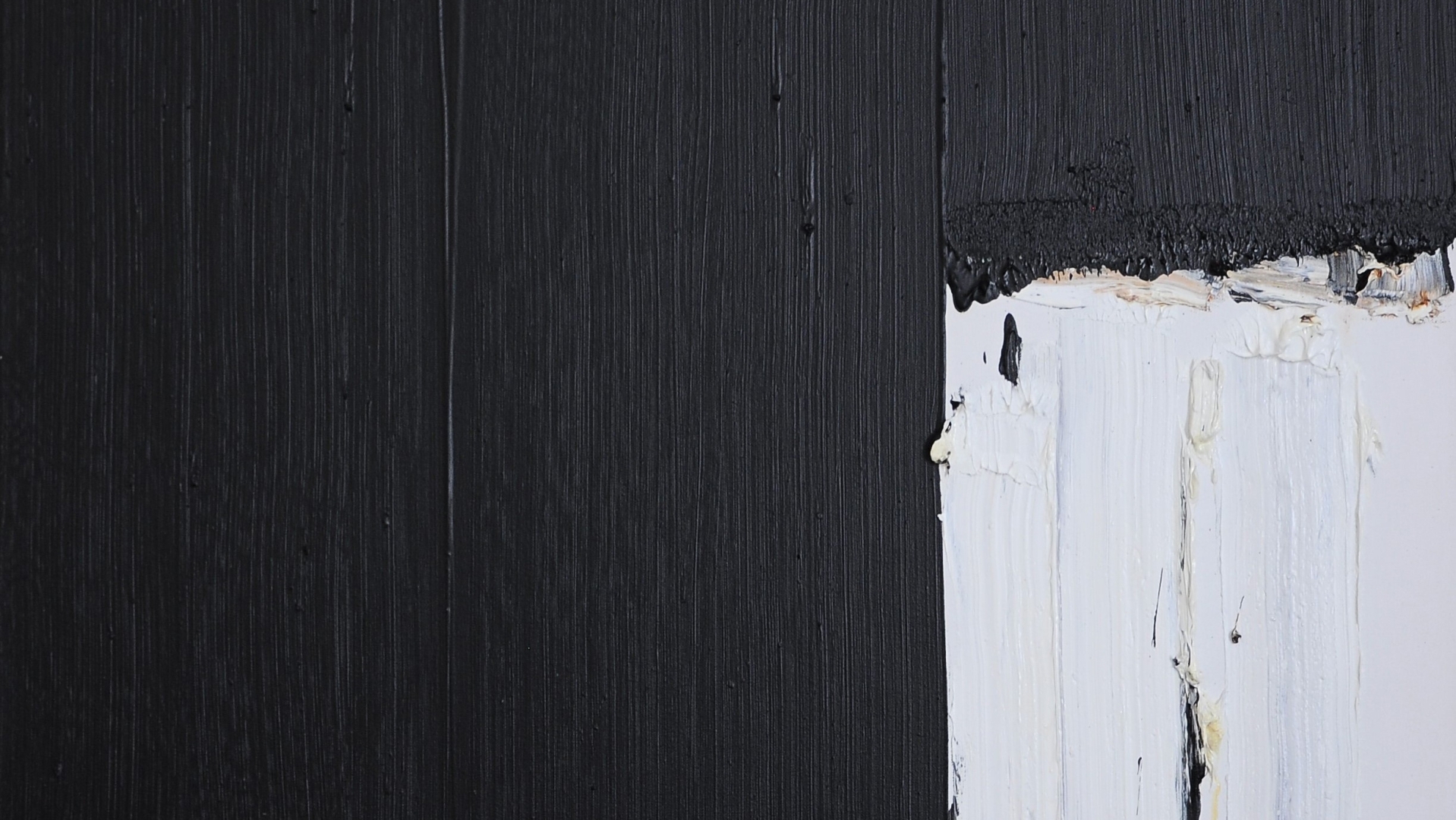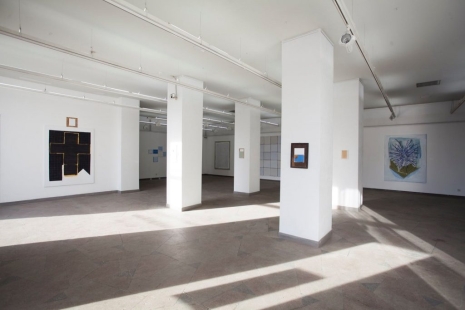The exhibition includes Henrikas Čerapas’ small-scale series from 2019–2023: Dark Times (2019), Lightening Up (2019–2020), Thresholds and Cascades (2020–2022), Memorial of Papilė Cooperative Warehouse (2021–2022), T’khelet (2022), Stream (2022), and The Pleasant Smell of Sleeper Resin (2022–2023).
Alongside Čerapas’ thematic large compositions, the series of small-scale works constitute a distinct whole. As if in the margins of a powerful gesture, the small formats record invisible and “insignificant” time: “The marked days have highlighted the certainty of existence, while the unmarked ones remain in oblivion as empty gaps (H. Č.)”. Painting relatively small canvases corresponds to a “painter’s diary” – the works have specific recordings of the painting sections. The fragment of their time, or time consumed, is between the first and the last date on which the work was recorded.
The plasticity of the small canvases is intense. The strokes are an expression of an inner relationship with reality, or a reduction of the absence of that relationship. The object of the painting is the method itself – the strokes are drawn, “so they have an intended meaning, they are purposefully drawn in black paint – they are just strokes. On the other hand, the strokes are an expression of a relationship with the inner and changing visual reality experienced every day, and therefore they are not uniform, they can be light and straight and aesthetic, they can be thick and roughly drawn, they can obey an inner voice or the tone of the day’s mood, they can be as black as night, or as grey as fog, or as just as black and white as the snow and the earth, but always in one direction – from top to bottom, as the method prescribes (H. Č.)”.
The exhibition is symbolically named a columbarium of painting, reflecting the factor of the passing time (35 years since Henrikas Čerapas’ first exhibition, Painting: Aloes, held in the same space, the then Art Foundation Gallery), presenting the layers of his painterly time as a small summary of the totality of creative processes:
“This exhibition takes place after the painting, it is a product of the project-application system, and for that reason it takes place already in post-time, i.e. “delayed”. That is why I describe it as retrospective and call it a cemetery – a columbarium – of the past time of painting; because the exhibition itself represents the past, shows what has been, what has already happened, and my approach to painting, or conception, whatever we call it, is tied up with the encounter of its fulfilment and happening in the present time. The artefacts in the exhibition are therefore no longer a living thought and a living body, but witnesses of a time of painting that has already passed, they are like tombstones of a life that has passed into nothingness (H.Č.).”
The exhibition is an ambitious intellectual effort, encouraging reflection on the devaluation of painting in today’s world, on the conflicting gazes of the painter and the viewer, and on the existence of painting itself in time, its temporality sharpened by matter (Agnė Kulbytė).
Columbarium of Time Consumed has been included in the cultural route of Su-menėk, the Vilnius City’s event. Pamėnkalnio Gallery will be accessible by a free bus for all four weekends of February.
Gallery opening hours during the exhibition:
II–V 11:00–19:00.
VI 11:00–18:00.
VII 13:00–16:00.
Organiser: Pamėnkalnio Gallery.
Partner: Vilnius City.
Curator: Agnė Kulbytė.
Coordinator: Kristijona Čerapaitė.
Designer: Airida Rekštytė.
Sponsors: Lithuanian Council for Culture, Lithuanian Artists’ Association.





